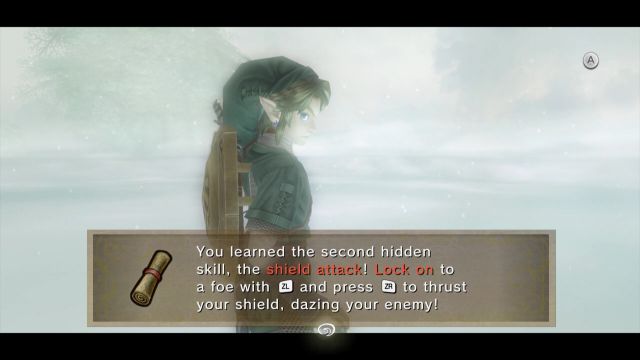If you’re a fitness generalist, you take interest in a wide variety of physical activities. Maybe you rotate between different sports throughout the year, or maybe you combine one or two sports with weightlifting, or running, or hiking, all in a short time period. Or you do something in between.
At face value, this is undeniably good for you: mainly because it means you’re getting more exercise than the average person (and the average person isn’t getting enough), but also because it’s good to subject your body to some variety of challenges. But fitness generalism can be difficult, and not just because you’re working out extra.
Fitness whiplash
Generalists who bring their multiple interests to the world of physical fitness quickly learn that there’s no such thing as “fitness.” There’s fitness for sprinting, fitness for playing basketball, fitness for rock climbing, and so on. Getting fit for distance running will hurt your fitness for heavy lifting. Getting larger muscles will help your fitness for heavy lifting, but only to a point, and if you really care about heavy lifting you’ll eventually have to change your program from “mainly hypertrophy-focused” to “mainly strength-focused.”
Fitness generalists will likely want to change up their fitness routines often. And, that’s a bit of a pain, because it’s essentially forcing your body to work against its past self. This month is running; next month is volleyball; etc. In all the back-and-forth whiplash of fitness adaptations, you may be preventing your body from making real progress in any one area. After all, physical fitness happens on the scale of seasons and years, which is often slower than the rate at which a generalist finds new interests.
Buying moves
Fortunately, there’s an amazing quirk of the human body that makes fitness adaptations work a bit like powerups in a video game. You can spend some resource to add capabilities to your “character,” and if you do it right they’re always available to you (for the most part). I’m talking about muscle memory and our ability to “lock in” physical skills.

If you play volleyball for three years and then quit and lift weights for the next three years, you don’t lose all of your volleyball skill. You don’t even lose most of it. It’s really convenient that our bodies work this way—convenient for generalists especially! You buy moves with time and effort; you have to put in enough hours of practice to get to a “save point” where you learn the skill in your body and not just in your mind. Then it’s “locked in” for a long time.
Sometimes you quit before you get to a save point, and that’s okay. I’ve “learned” swing dancing at least three times in my life. I never got to a save point—meaning, in the present moment I can’t do any proper swing dancing. I learned enough to know something for one night or one week, but not enough to lock in anything to muscle memory. Was my time wasted? Well no, it was fun. But you can see how it’d pay off a little more if I practiced for, say, two weeks straight. Even if that was 10 years ago, I’d probably still remember something of swing dancing today.
Different activities have different save points. Shooting a basketball with proper form for a decent percentage takes many, many hours of practice—longer than, say, learning how to slowly ski down a moderate hill. A generalist benefits from thinking about these things ahead of time: “How frequently am I willing to practice this thing, and for how long, and what skills do I expect to lock in over that period of time?”
Personal experience
I’ve saved skills into muscle memory (“bought moves”) in several areas. I can do the parkour vaults; I can shoot a basketball; I can vertical-jump with proper form and get pretty high, etc.
The other day I played basketball for the first time in like seven years. It felt rusty, sure, but at every point in the game my body at least knew what it was supposed to be doing. There was no uncertainty in it, just rust in the execution. In other words, all the memory is still there. If I’d practiced for just a few days straight, moving in the right ways and pushing my cardio, it would’ve gotten me to ~90% of my previous skill level.
And it’s a nice feeling to know that I could return to that. Nothing in life is permanent, and certainly nothing about our physical bodies is permanent, but the way our muscle memory works feels just a little bit like permanence.
When I started Muay Thai kickboxing, I only intended to learn some basic self-defense over the course of two or three months (I ended up loving it and continuing it, but that wasn’t planned). I went to four class sessions in my first week. I soon upped it to five per week, and then six. I put myself on a crash course because I wanted to lock in something permanent, quickly. I’ve seen beginners come to my gym intermittently for six+ months and still not get to the level I reached in those first three. They’d be better off not going to the gym for all that time and then cramming all their lessons into a shorter, more focused block of time. These are the kinds of advantages you notice if you think ahead in terms of buying moves.
The big picture of fitness
What is the fitness generalist’s overarching goal? I do think they should have one, as opposed to just dabbling in whatever sport or activity feels fresh. With aimless dabbling, you risk missing the save points and making your body work against itself.
A fitness meta-goal could be something like “be more generally adaptable to a variety of physical demands,” or “be able to play a lot of different sports with friends.” The most important goals in life are fuzzily defined anyway. But if you think about save points and buying moves, then everything you do in fitness is potentially something you can keep with you for the rest of your active years. Paying mind to the big picture lets you make physical fitness a unified life project, even while you enjoy great variety in your physical activity.
